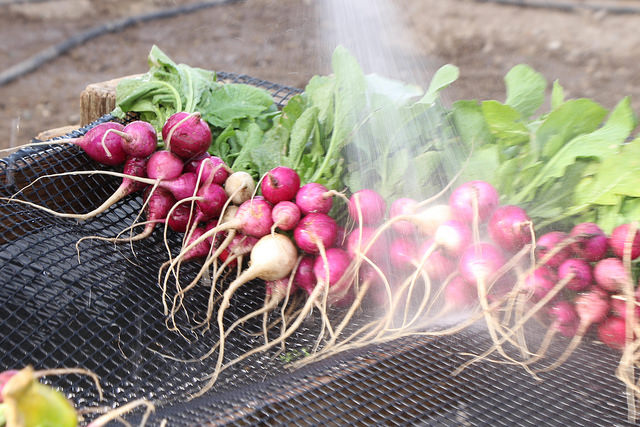
The Food and Drug Administration (FDA) has published updated information for producers and small businesses trying to determine whether and to what extent they may be impacted by FDA’s new food safety rules.
Exemptions to the Food Safety Modernization Act
If you recall from our previous posts about FDA’s Food Safety Modernization Act (FSMA) rules, certain farms that grow produce and food processors can be exempt from the rules depending on how much they sell and to whom they sell. Producers may either be completely exempt from compliance with the new requirements, or “qualified exempt” and eligible for modified requirements. To determine exemption, there are sales thresholds that apply to each category; sales thresholds can vary depending on whether the operator is a produce farmer or running a food facility. Regardless of the type of operation, however, sales thresholds or cutoffs are supposed to be based on an average of the past three years’ worth of sales and adjusted for inflation.
This clarification regarding inflation adjustment is important because the qualified exemption in the Produce Rule applies to farms with less than $500,000 in food sales (averaged over three years’ worth of sales), where the majority of those sales are direct to qualified end users. However, it is important to note that when adjusted for inflation, the dollar cutoff is actually higher than $500,000. The same is true for the $25,000 “de minimis” exemption.
FDA’s website provides the inflation-adjusted values relevant to all of the FSMA rules that have these kinds of sales thresholds or cutoffs, and will be updated in March of each year to reflect the most recent inflation-adjusted values. For 2015-2017 sales (and 2018 compliance purposes), the inflation-adjusted average value is $539,982 for the qualified exemption and $26,999 for the de minimis exemption.
How It Works
A farm that is looking to assess whether they satisfy the Produce Safety Rule’s qualified exemption for 2018 should average their past three years of food sales (2015, 2016, and 2017), and then compare that number to the Produce Safety Rule inflation-adjusted average for 2014-2016 (identified above and posted on FDA’s website). If the farm’s sales are below that value, then they qualify for the exemption (assuming they also are selling majority direct to a qualified end user).
In 2019, the farm should average their food sales from 2016, 2017, and 2018 and compare that number to the updated inflation-adjusted average for 2019, which FDA updates by the end of March each year.
The FDA page also contains inflation-adjusted cutoffs for qualified facilities under the Preventive Controls Rule. Under that rule, very small businesses are considered qualified facilities and are eligible for modified requirements. A very small business has less than $1 million in food sales (based on a three-year average); but again, that number is adjusted for inflation.
A facility would follow the same process as outlined above for the Produce Safety Rule: for 2018, the facility would average the past three years’ worth of human food sales (2015, 2016, and 2017) and then compare that averaged value to FDA’s inflation-adjusted cutoff for 2015-2017. For 2015-2017 sales (and 2018 compliance purposes), that value is $1,079,963.
We appreciate that FDA is supplying this information in a straightforward, accessible manner, and believe it provides an easy way for farmers and processors to verify their sales against the cutoff.
If you have additional questions about whether the FSMA rules apply to your operation, check out our FSMA Special Reports and our Am I Affected? FSMA Flowchart.


you do not actually hear anything about this .
There are or will be new regulations .
I was told by university of Michigan that you had to of filed schedule f of 1040 tax form in 2015 to be considered for exemption . you just discussed .
I heard somewhere someone wants me to report every wild animal that comes on my property.
Hi Henry, sounds like you might want to get in touch with your local FSA office to check in on what’s required for your operation – also, please feel free to check out our free resources and see if they can provide some insight!